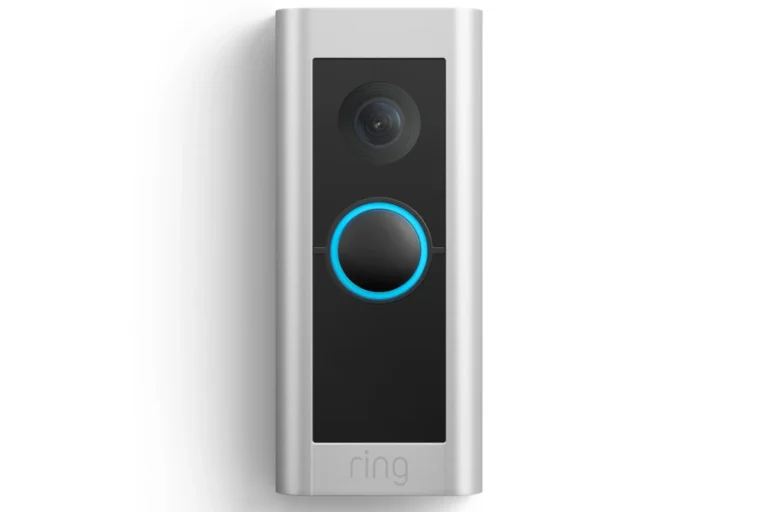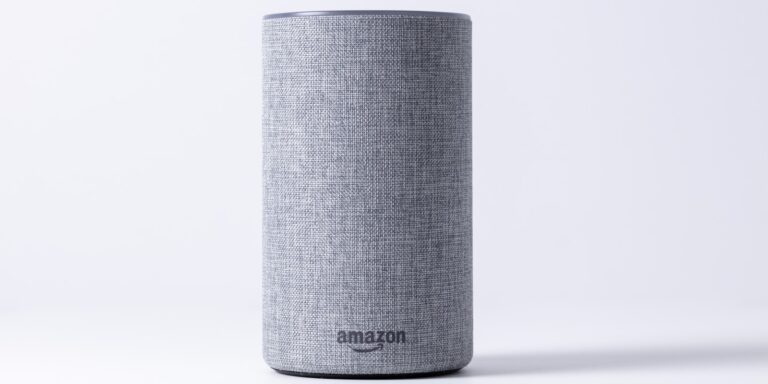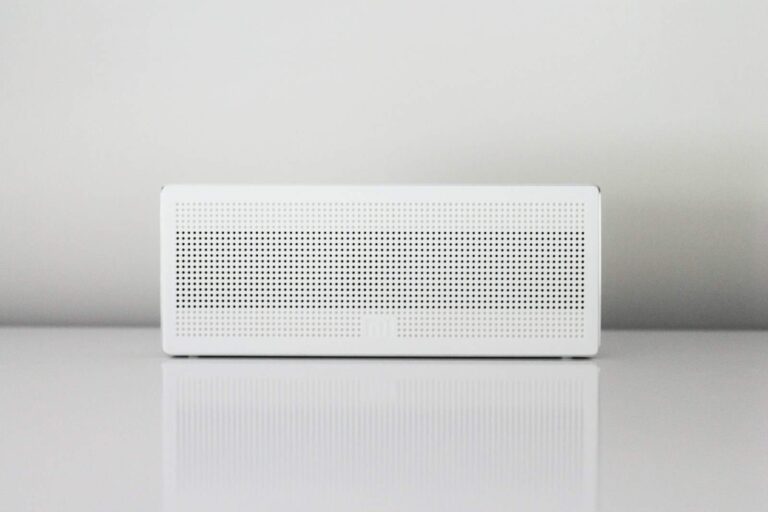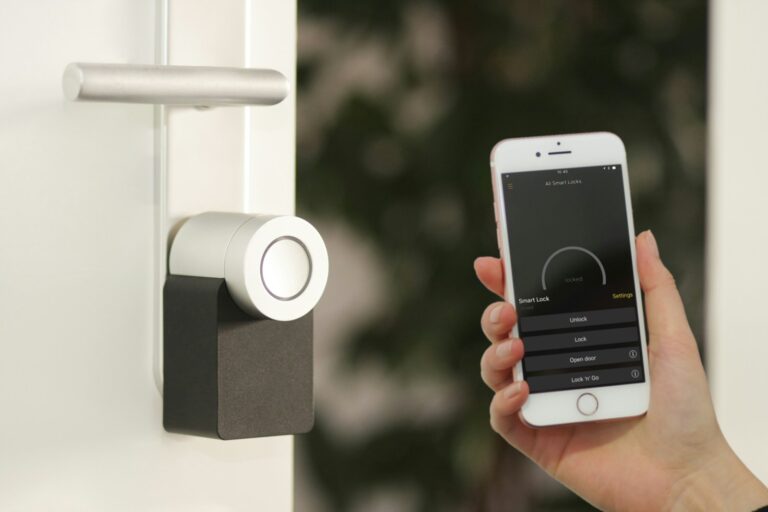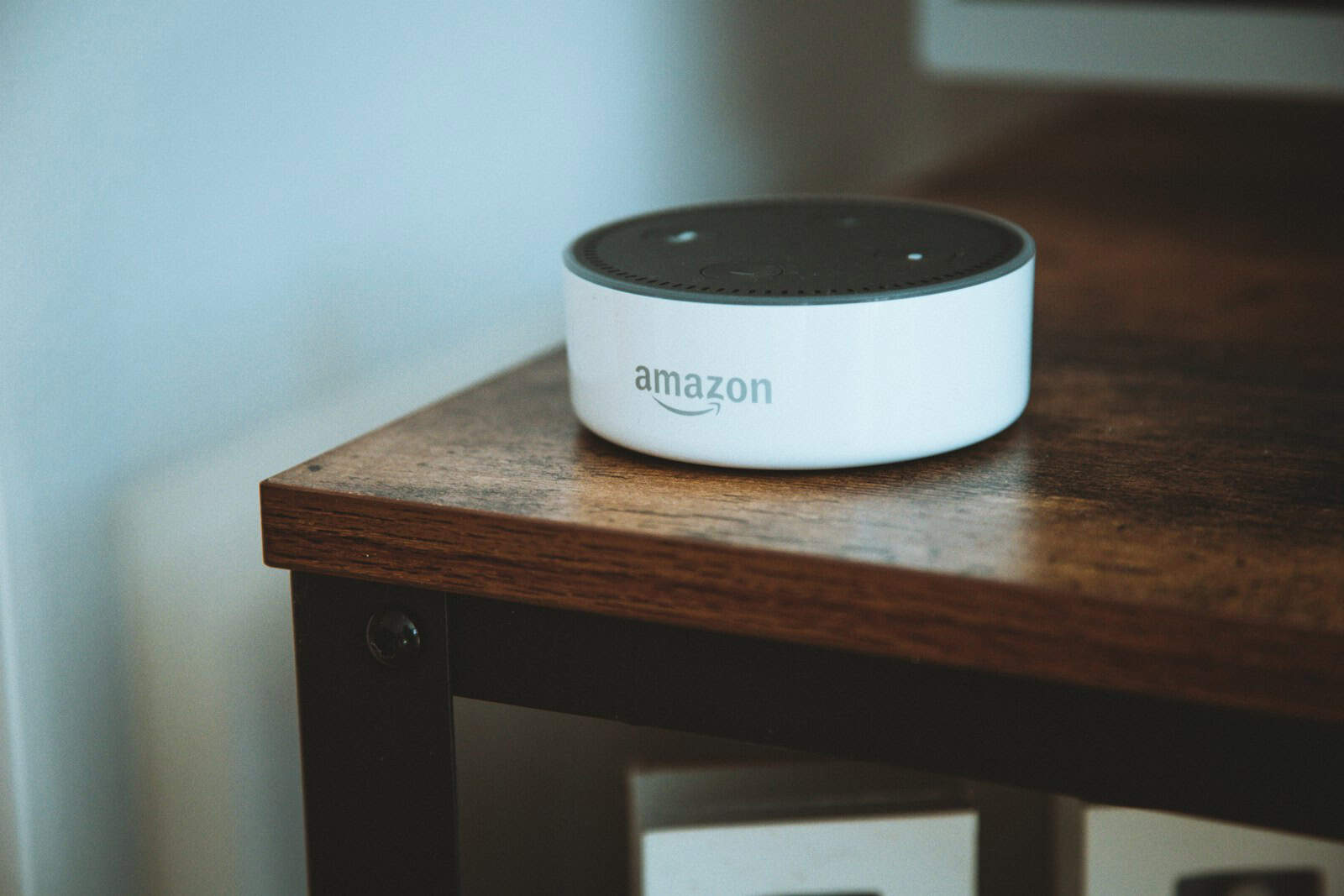
Did you know Amazon’s virtual assistant keeps a record of everything you ask? Your Alexa voice history is a complete log of all your interactions with the device. You can review, listen to, and delete your voice recordings through the Alexa app or your Amazon account settings.
Many users don’t realize that managing these recordings is simple. Whether you’re concerned about privacy or just curious about your past interactions, Amazon provides several ways to access this information. The process takes just a few taps in the Alexa app.
Understanding your voice history options gives you more control over your personal data. You can filter recordings by date or device, making it easier to find specific conversations. This feature is especially helpful if you share your Alexa with family members who have different profiles.
How To Access and Manage Your Alexa Voice History
Amazon Alexa stores recordings of your voice commands to improve its performance and personalization. If you want to review, delete, or manage these recordings, you can easily do so through the Alexa app or Amazon’s website. Here’s a step-by-step guide.
Option 1: Manage Alexa Voice History in the Alexa App
Step 1: Open the Alexa App
- Launch the Alexa app on your iPhone or Android device
- Sign in with your Amazon account if you haven’t already
Step 2: Go to Settings
- Tap More in the bottom-right corner
- Select Settings
Step 3: Navigate to Alexa Privacy
- Scroll down and tap Alexa Privacy
- Then select Review Voice History
Step 4: View and Manage Recordings
- Choose the date range for the recordings you want to review (e.g., today, this week, all history)
- Tap on individual recordings to:
- Listen to what Alexa heard
- See the transcribed text
- Delete the entry
You can also delete everything in bulk by selecting Delete All Recordings for [selected time frame].
Option 2: Manage Voice History from Amazon’s Website
Step 1: Visit Alexa Privacy Settings
- Go to: https://www.amazon.com/alexaprivacysettings
- Sign in to your Amazon account
Step 2: Access Voice History
- Click Review Voice History
- Use the drop-down menus to filter by device or date range
- Review, play back, or delete entries as needed
Auto-Delete Settings
You can set Alexa to automatically delete recordings on a schedule:
- In the Alexa app, go to Alexa Privacy > Manage Your Alexa Data
- Tap Choose how long to save recordings
- Select from:
- Save recordings until I delete them
- Save for 18 months
- Save for 3 months
- Don’t save recordings
You can also enable voice deletion commands by toggling on “Enable deletion by voice.” Then you can say:
- “Alexa, delete what I just said”
- “Alexa, delete everything I said today”
Why It Matters
Reviewing your Alexa voice history lets you:
- Monitor what’s being recorded
- Delete sensitive or incorrect commands
- Improve privacy and control over your data
Amazon uses this data to refine Alexa’s responses, but you’re in full control over how much information is stored and for how long.
Key Takeaways
- Access your complete voice history through the Alexa app by tapping More > Alexa Privacy > Review Voice History.
- You can filter your voice recordings by date, device, and user profile for easier management.
- Deleting your voice recordings is possible through the app, website, or by directly asking Alexa to delete what you just said.
Understanding Alexa Voice History
Amazon’s Alexa keeps a record of your voice commands and interactions. This history helps improve the service while giving you control over your privacy and data.
What Is Alexa Voice History
Alexa Voice History is a collection of all the voice recordings captured when you interact with your Amazon Echo or other Alexa-enabled devices. Every time you say “Alexa” followed by a command, this audio is saved to your Amazon account. These recordings include not just your requests but also Alexa’s responses to them.
You can review these recordings through the Alexa app under the Alexa Privacy section. This history shows the date and time of each interaction, which device was used, and allows you to listen to the actual audio recording.
Voice history serves two main purposes: it helps Amazon improve Alexa’s speech recognition capabilities, and it allows you to see what Alexa heard when it may have misunderstood your commands.
How Alexa Processes Voice Commands
When you speak to Alexa, your voice is sent to Amazon’s cloud servers for processing. This happens because the complex speech recognition algorithms require more computing power than your Echo device contains.
The wake word “Alexa” triggers the device to start listening. Once activated, your voice command is:
- Recorded and sent to Amazon’s servers
- Processed by speech recognition technology
- Analyzed to determine your intent
- Executed through the appropriate skill or service
Your voice recordings are stored securely but indefinitely unless you manually delete them. You can manage this data through the Alexa app by going to More > Settings > Alexa Privacy > Review Voice History.
For privacy concerns, you can delete individual recordings, all recordings from a specific time period, or set up automatic deletion after a certain timeframe. Amazon uses these recordings primarily to train their voice assistant to better understand different accents and speech patterns.
The Importance of Alexa Privacy
Alexa devices constantly listen for wake words, raising questions about what happens to your voice data. Privacy settings play a crucial role in managing how Amazon handles this information.
Voice Recordings and Privacy Concerns
When you speak to your Alexa device, it doesn’t just respond to your command—it records and stores your voice. These recordings help Amazon improve Alexa’s accuracy, but they also create potential privacy risks.
Amazon keeps these voice recordings indefinitely unless you change your privacy settings. This means years of your conversations could be stored on Amazon’s servers.
Your Alexa interactions create a detailed profile about your habits and preferences. The device knows when you’re home, what music you enjoy, and even products you purchase regularly.
To protect your privacy, you can:
- Review your voice history in the Alexa app
- Delete recordings manually or automatically
- Turn off storage of voice recordings
- Mute your device when not in use
The Alexa Privacy Hub provides tools to control your data. You can customize settings to balance convenience with privacy protection.
Managing Your Alexa Voice History
Your Alexa devices keep a record of your voice commands and interactions. Understanding how to access, review, and manage these recordings gives you better control over your privacy.
Navigating the Alexa App for Voice History
To find your voice history, open the Alexa app on your smartphone. Tap the “More” button in the bottom right corner of the screen. From there, select “Settings” and then scroll down to find “Alexa Privacy.”
Within the Alexa Privacy section, you’ll see several options related to your data. Tap on “Review Voice History” to access all your past interactions with Alexa.
The interface allows you to filter recordings by date range (today, yesterday, this week, this month, or all history) and by specific devices. This makes it easier to find particular conversations or commands you’re looking for.
You can also filter by user profile if multiple people use Alexa in your household, helping you focus only on your own interactions.
Reviewing Your Voice Interactions
Once you’ve navigated to the voice history section, you’ll see a chronological list of your Alexa interactions. Each entry shows the date, time, and the specific device that recorded your voice.
For each recording, you can see what Alexa heard and how it interpreted your request. This is helpful for understanding why Alexa might have responded incorrectly to certain commands.
You can listen to each recording by tapping the play button. This feature lets you verify what was actually captured, which is particularly useful if you’re concerned about accidental recordings or privacy.
The app also shows you which Alexa skill or function was triggered by your request, giving you insight into how the system processes your commands.
Steps to Delete Specific Voice Recordings
If you want to remove individual recordings, simply tap on the entry you wish to delete. Look for the option that says “Delete recording” and confirm your choice when prompted.
To delete multiple recordings at once, you can use the date filters to select a specific time period. Options include “delete everything I said today” or delete recordings from specific dates.
For immediate removal of your most recent command, you can simply say “delete what I just said” to your Alexa device, and it will remove the last interaction.
Amazon also offers automatic deletion options. You can set your account to automatically delete recordings after 3 months or 18 months, which helps maintain privacy without requiring manual deletion.
For complete privacy control, review these settings periodically as Amazon may update their privacy features and options.
Deleting Voice History with Commands
Alexa’s voice command deletion features give you quick control over your privacy without needing to navigate through the app. These commands work once you enable deletion by voice in your Alexa settings.
Using ‘Delete What I Just Said’
When you need to remove your most recent voice interaction, simply say, “Alexa, delete what I just said.” This command immediately erases your last recording without requiring any additional confirmation.
This feature is particularly useful when:
- You accidentally triggered Alexa
- You shared sensitive information
- You made a personal request you’d prefer not to save
The command only removes the single most recent interaction. If you want to verify the deletion, you can check your voice history in the Alexa app to confirm it’s gone.
Remember that this command doesn’t delete anything older than your most recent request.
Activating ‘Delete Everything I Said Today’
For more comprehensive privacy management, say “Alexa, delete everything I said today.” This powerful command erases all voice recordings from the current calendar day.
When you use this command, Alexa will ask for confirmation before proceeding with the deletion. Simply respond with “yes” to complete the process.
This option is ideal when:
- You’ve had multiple sensitive conversations
- You’ve been using Alexa extensively
- You want a fresh privacy slate
The deletion is limited to the current day only. For older recordings, you’ll need to use the Alexa app’s privacy settings or set up automatic deletion schedules.
Many users find this command helpful for regular privacy maintenance without needing to access the app.
Alexa Privacy Features
Amazon’s voice assistant offers several privacy tools that give you control over your voice recordings and data. These features help you understand what information Alexa collects and how you can manage it.
Alexa Privacy Settings Overview
The Alexa Privacy Settings section in the Alexa app gives you complete control over your voice data. To access these settings, open the Alexa app, tap “More,” select “Settings,” and then tap “Alexa Privacy.”
Here you’ll find several important options:
- Review Voice History: See and listen to your past Alexa interactions
- Manage Smart Home Device History: Control data from connected devices
- Manage Skill Permissions: Review what third-party skills can access
- Manage Your Alexa Data: Choose how long your data is stored
You can filter your voice recordings by date, device, or profile. This makes it easier to find specific interactions. You can also delete your voice history completely or in selected chunks.
The Alexa Privacy Hub Explained
The Alexa Privacy Hub is Amazon’s central location for all privacy-related controls. It gives you transparency about what data Alexa collects and how you can manage it.
Key features of the Privacy Hub include:
- Voice Recording Controls: Listen to and delete recordings
- Data Storage Options: Choose automatic deletion timeframes
- Transcription Review: See text versions of your voice commands
- Privacy FAQs: Get answers about how Amazon uses your data
The hub also includes the “Manage Your Alexa Data” section where you can opt out of having your recordings used for service improvement. You can set your preferences to automatically delete recordings after 3 or 18 months.
Your privacy settings sync across all your Alexa-enabled devices. This ensures consistent privacy management regardless of which Echo or Alexa device you’re using.
Interacting with Alexa Across Devices
Alexa voice interactions can be reviewed across multiple devices in your smart home ecosystem. Your voice commands, questions, and interactions are stored in your Alexa history, which you can access from various platforms.
Voice History on Amazon Echo Speakers
Echo speakers store all your voice interactions with Alexa. You can review these directly from your Echo device by asking, “Alexa, what did I just say?” for recent commands. For complete history access, you’ll need to use voice commands like “Alexa, open my voice history.”
Some Echo devices with screens (like Echo Show) let you review voice recordings directly on the device. Navigate to Settings, then Alexa Privacy, and select “Review Voice History” on the touchscreen interface.
Your Echo speakers organize voice history chronologically, making it easy to find recent interactions. However, they offer limited filtering options compared to the mobile app.
Voice deletion can also be done by saying, “Alexa, delete what I just said” or “Alexa, delete everything I’ve said today.”
Accessing Alexa Voice History on Smart Devices
The Alexa mobile app provides the most comprehensive access to your voice history. Open the app, tap “More” in the bottom menu, then select Alexa Privacy.
From there, you can:
- Select “Review Voice History” to see all interactions
- Filter by date range (Today, Yesterday, Past 7 days, etc.)
- Search for specific commands
- Listen to your recorded voice interactions
- Delete individual or multiple recordings
The mobile interface allows for more detailed filtering by date and provides a user-friendly way to manage your privacy settings. You can also adjust how long Amazon keeps your voice recordings.
Smart devices make reviewing history more visual and intuitive than voice-only interactions.
Reviewing Voice History on Laptop Software
While Amazon doesn’t offer dedicated desktop software for Alexa, you can access your voice history through any web browser. Visit the Alexa Privacy Hub at alexa.amazon.com and sign in with your Amazon account.
The web interface provides similar functionality to the mobile app but with a larger screen experience. This makes it easier to review extensive history or navigate through multiple interactions.
Unfortunately, the web interface has limitations. You cannot search or filter voice history as extensively as in the mobile app. The chronological organization means you may need to scroll through many entries to find specific interactions.
For more comprehensive history beyond voice commands, check the Activity section which shows alarms, routines, and reminders you’ve set up.
Frequently Asked Questions
Managing your Alexa voice recordings gives you control over your privacy and helps you understand how you use your device. These common questions address key aspects of accessing, reviewing, and managing your voice interaction history.
How can I access and review my interactions with Alexa?
You can easily review your Alexa voice history through the Alexa app on your mobile device. Open the Alexa app, tap “More” in the bottom right corner, then select “Alexa Privacy,” and choose “Review Voice History.” This menu shows all your previous interactions with Alexa.
On Echo Show devices, you can access this feature through Settings. The voice history displays both audio recordings and text transcripts of your requests.
What steps are required to download my history of voice commands given to Alexa?
To download your complete Alexa voice history, go to your Amazon account on a web browser. Navigate to the Privacy Settings section and locate the Alexa privacy options. From there, select the option to download your data.
You’ll need to specify the time period for the data you want to download. Amazon will prepare your data package and notify you when it’s ready for download.
Is there a way to retrieve missing entries from my Alexa voice log?
If you notice missing entries in your Alexa voice log, check your Voice History settings to ensure you’re viewing the correct time period. By default, the app might only show recent history.
Change the filter from “Today” to “All History” to see your complete voice log. If entries are still missing, they may have been automatically deleted based on your privacy settings or manually deleted previously.
Can I check the history of my voice requests to Alexa online?
Yes, you can review your Alexa voice history online without using the mobile app. Visit the Alexa Privacy Settings page on Amazon’s website.
Sign in to your Amazon account, and you’ll have access to the same voice history tools available in the app. This web interface allows you to listen to recordings, read transcripts, and manage your voice data.
How long does Alexa store the history of voice commands?
Alexa stores your voice command history indefinitely by default, but you have control over this duration. Your voice recordings remain in your account until you manually delete them.
You can set up automatic deletion options in the Privacy settings. These options include deleting recordings after 3 months or 18 months. You can also manually delete individual recordings or clear your entire history at any time.
What is the process for adjusting Alexa’s settings to manage voice history?
To manage your Alexa voice history settings, open the Alexa app and tap “More.” Select “Alexa Privacy” and then “Review Voice History” to see your options.
From this menu, you can delete individual recordings by selecting them and tapping “Delete Selected Recordings.” For broader control, tap “More” again and select “Manage Your Alexa Data.” Here you can set up automatic deletion timeframes and adjust how Amazon uses your voice data.

